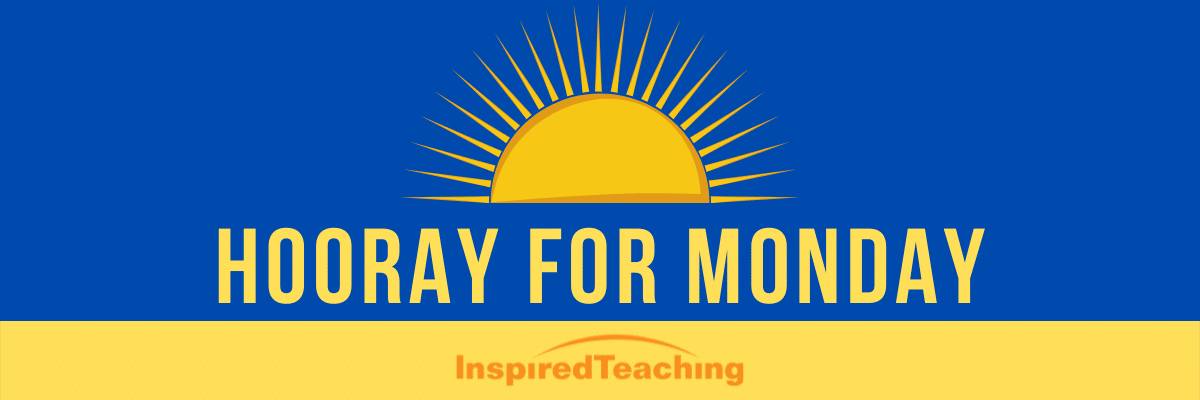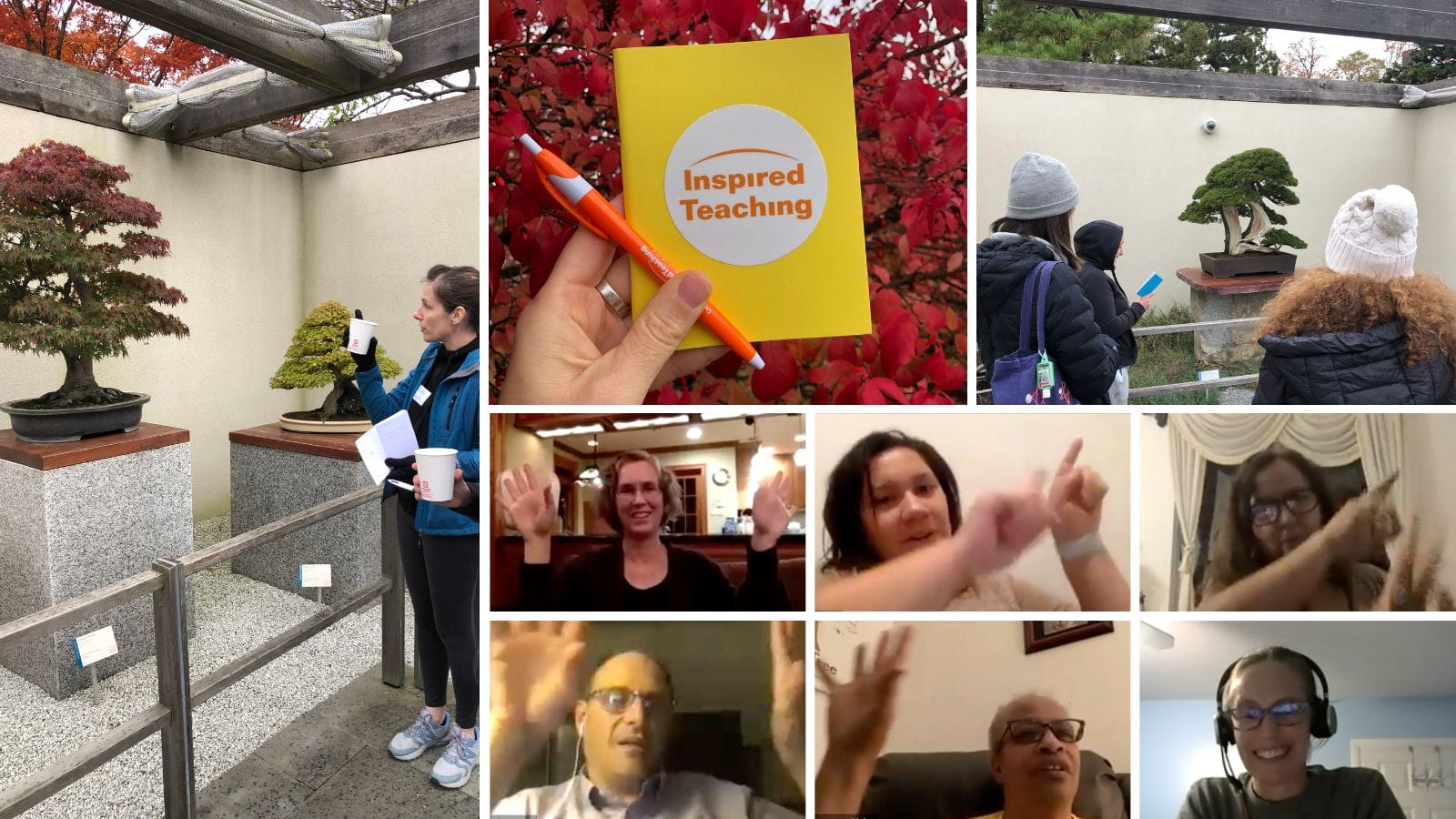November 15, 2021
By Aleta Margolis, Founder and President, Center for Inspired Teaching
Hooray for Monday is a weekly blog filled with questions, ideas, reflections, and actions we can all take to remodel the school experience for students.

This past week my colleagues and I led a gorgeous (inside and out) group of teachers in virtual and in-person Inspired Teaching Institutes focused on storytelling.
Our explorations ranged from setting, character, and plot development to narrative purpose. You may imagine a dull lecture with that terminology, but when I say “explore” I mean with our entire bodies. We told stories with our hands, traveled to the past and future through music, and met new characters derived from junk drawer miscellany and bonsai trees.
Each of the activities was designed to enrich us personally and to be adapted to the classroom. Storytelling can be used to build skills in reading, writing, speaking and listening, critical thinking, and more. Learning to listen to the stories of others or imagine ourselves in the shoes of characters and scenarios we create builds empathy. Storytelling is at the heart of being seen and heard.

In one activity – called What’s Your Story? – we told one another our personal stories, in three unique versions:
- My story, tried and true. This is the story we tell when we’re introducing ourselves to someone for the first time. It’s the elevator pitch conveying who we are.
- My story at this unique moment in time. This is the story of us today, the one that wouldn’t be present at any other point in our lives.
- My aspirational story, trying something new on for size. This is the story that incorporates a facet of ourselves we’re considering adding to tweak our usual personal introduction.
Here are my three versions:
- I’m Aleta Margolis, founder and president of Center for Inspired Teaching, theatre major turned social entrepreneur who hopes to make school a place where kids and teachers can thrive. I’m the mom of the fabulous Isabel and Mira, and a former cats-only person who, for the past 13 years, has been smitten with my canine child, Wally.
- I’m Aleta Margolis. My youngest daughter Mira turned 20 last week, and for the first time in over a decade, I am the mom of no teenagers and two official young adults!
- I’m Aleta Margolis, and I am soon-to-be a person who goes to bed every night at a consistent time and gets eight hours of sleep every day.
The purpose of this activity is to become aware of the messages we convey in our own personal storytelling. The way we tell our stories shifts the way listeners hear them. And there is great power in that. The elements we emphasize, the characters we introduce, the settings in which we situate ourselves and our listeners all open the door to understanding. What do we want others to know? There is power not only in the content of our stories, but also in how we tell them.
My colleague Jenna tells a story from her family’s Thanksgiving dinner table years ago. Her story illustrates the point:
“I’d only been in the classroom for three months, but I had so many stories to tell. For the entire meal I held everyone’s attention at the table. The sensational stories about failed lessons and behavioral explosions got the biggest rise out of my audience. So those are the ones I told. Over pumpkin pie, I received my family’s praise and sympathy for sticking it out in a terrible school. But something didn’t sit right. The truth was, I loved my job. I loved my school in spite of its challenges, and I was regularly in awe of my students. I saw in a flash that none of the stories I’d told conveyed the joyful, rich nature of my work as a teacher. Though my stories were compelling, they had inadvertently bolstered stereotypes about under-resourced public schools without making any case for their merits. I didn’t want to do that anymore. So in future years I found myself thinking ahead and choosing stories I could tell that might enlighten my listeners and even create new understanding.”
We can use stories to entertain and command attention. We can also use them to uplift our listeners and our fellow teachers. As you push through this week before the holiday break, think about the story of you and the story of the work you do. How might you tell that story in a way that shifts someone else’s thinking? How might you wield the power of your own voice?
